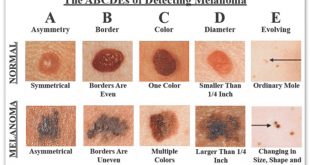 According to the US Pain Foundation, research tells us that 50 million Americans live with chronic pain, or pain that lasts most days or every day for three months or more. Of this group, 20 million experience high-impact chronic pain, or pain that interferes with basic functioning and activities of daily living. Pain is the number one reason that Americans access the health care system and costs the nation up to $635 billion each year in medical treatments, disability payments, and lost productivity.1
According to the US Pain Foundation, research tells us that 50 million Americans live with chronic pain, or pain that lasts most days or every day for three months or more. Of this group, 20 million experience high-impact chronic pain, or pain that interferes with basic functioning and activities of daily living. Pain is the number one reason that Americans access the health care system and costs the nation up to $635 billion each year in medical treatments, disability payments, and lost productivity.1
There are a multitude of treatments available for chronic pain: medication, massage, exercise, acupuncture, and a wide variety of other treatments. Physical therapy (PT) for chronic pain is also an option, and it may help you manage your pain and regain normal mobility.
If you have chronic pain, working with a physical therapist can help your pain go away, and your therapist can give you strategies to keep the pain away. So, what does physical therapy for chronic pain look and feel like, and what can you expect from PT for chronic pain?
Physical therapists (PT) are experts not only in treating pain, but also finding its source. Your PT will look for areas of weakness or stiffness that may be adding stress to the places that hurt. They will treat those areas with certain exercises to ease pain and help you move better.
What to Expect from Physical Therapy
When attending physical therapy for chronic pain, your first session will be an initial evaluation. During this session, you will meet your physical therapist and discuss your condition. Your therapist should ask questions about your pain and how it behaves. Is your pain present constantly or intermittently, and how does it affect your life? What makes it better or worse? Your physical therapist should also ask about any previous treatments you have received and the effect those treatments have had.
He/she might do a review of your overall medical history and will perform various tests and measures to get a sense of any impairments that may be contributing to your pain, including:
• Range of motion
• Posture
• Strength
• Balance
• Endurance
Some of these tests may increase your pain, while others may cause your pain to decrease. Be sure to communicate with your physical therapist how you are feeling and how sensations are changing during your evaluation.
Once your PT evaluation is complete, your physical therapist should work with you to develop realistic and attainable goals for therapy. Goals may include pain relief, extended range of motion, increased strength and improved functional mobility. Your goals should be personal and should give you a plan to follow during your rehabilitation program. Following this initial evaluation, your treatment can begin.
PT Treatments
When you attend physical therapy for chronic pain, you may experience various treatments that may be used to decrease pain, improve your mobility, and help you fully function. Common treatments used by physical therapists for chronic pain patients include:
Exercise: Exercise should be your main PT tool in the treatment of chronic pain because it can help your body improve strength and mobility. When you can move with little or no pain, you are telling your brain that the movement is not going to hurt. This positive feedback allows you to move more with less pain. So, while you are getting stronger and improving mobility, you are also training your sensitive nervous system to trust that the movement is safe.
TENS and Electrical Stimulation: Transcutaneous electrical nerve stimulation (TENS) is a therapeutic modality that uses electricity to decrease pain signals coming from your body to your brain.
Massage: Some physical therapists employ massage techniques to decrease pain by improving muscular blood flow and relieving tightness.
Dry Needling: Dry needling is a newer treatment employed by some physical therapists to decrease painful muscle knots and trigger points. This treatment involves using small needles (like acupuncture needles) to pierce muscle tissue and knots, relieving the pain in these spots.
Heat or Ice: Modalities like heat and ice are often used by PTs to help decrease pain and inflammation. These treatments have not been proven to be effective with patients dealing with chronic pain, but they are often used as adjunct treatments during your PT sessions.2
Each of these treatments is designed to achieve a specific goal. It is important that you discuss with your physical therapist the intent of the treatment, so you know what to expect.
Innovative Therapies Group offers massage, physical, occupational and speech therapy. They embrace alternative and eastern medicine philosophies and will help you explore new inventive ways to combat your pain or disorders.
Types of Treatment Available with Physical Therapy
• Assessment and Evaluation Programs
• Difficulty Walking
• Fall Prevention and Balance Retraining
• Fitness and Wellness Programs
• Functional Training
• Gait Training and Balance Programs
• Manual and Massage Therapy
• Neurological and Neurodegenerative Retraining
• Vestibular Rehabilitation
Innovative Therapies Group, Inc.
352-433-0091 | innovativetherapiesgroup.com
1. Foundation, U.S.P. (2022) Understanding life with pain, U.S. Pain
Foundation. Available at: https://uspainfoundation.org/news/
understanding-life-with-pain/.
2. Brett Sears, P.T. (2021) Take control of your chronic pain with
physical therapy, Verywell Health. Verywell Health. Available at:
https://www.verywellhealth.com/pt-for-chronic-pain-4179087.
 Central Florida Health and Wellness Magazine Health and Wellness Articles of the Villages
Central Florida Health and Wellness Magazine Health and Wellness Articles of the Villages



